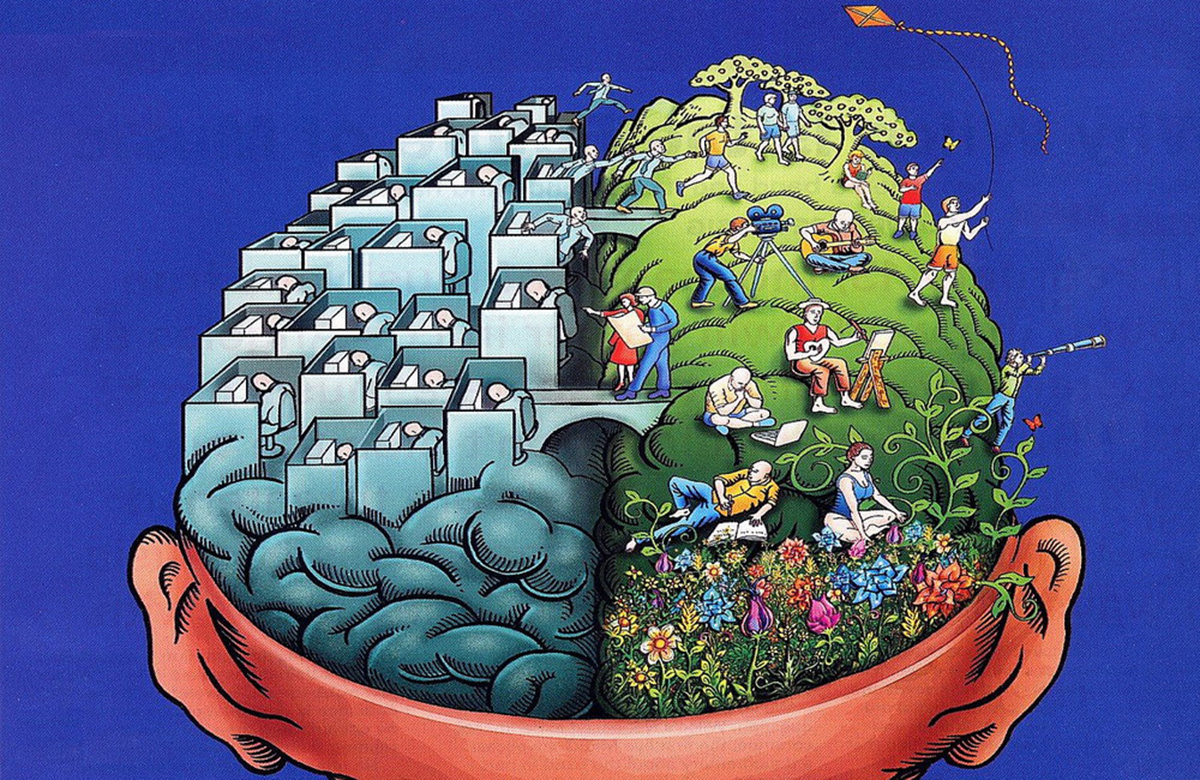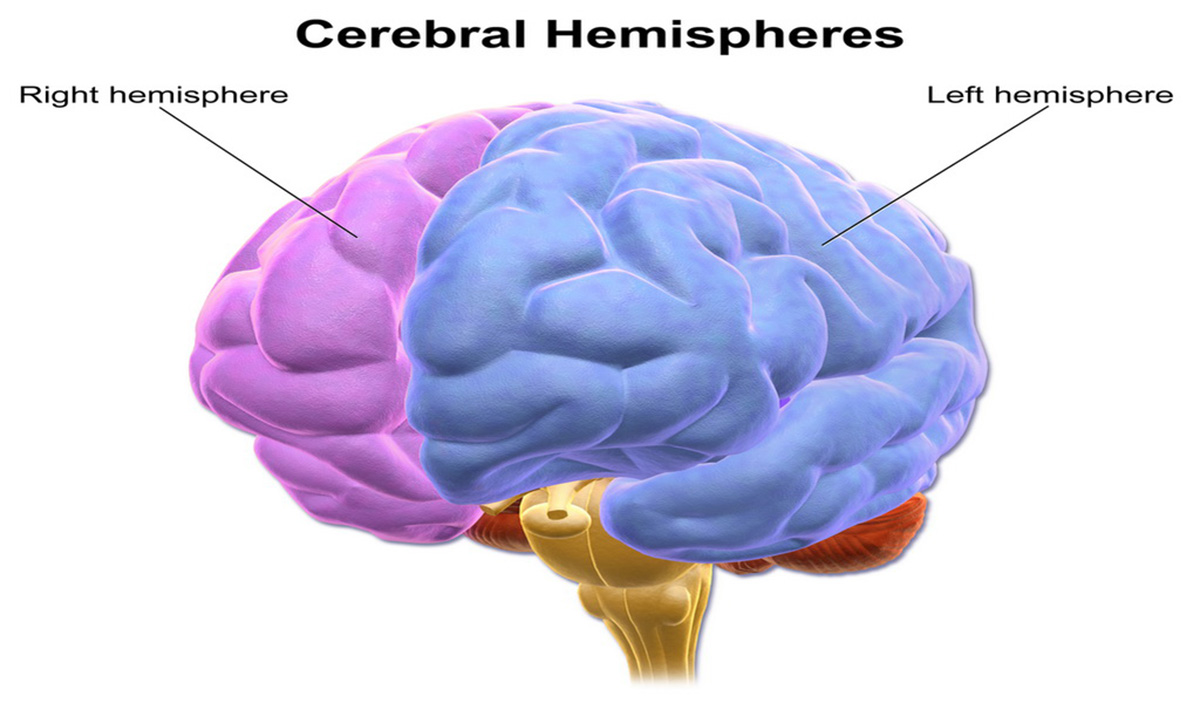Brain lateralization
For years, people have thought that each side of the brain or hemisphere is in charge of controlling different activities. Psychologists have developed then a variety of tests to determine if a person uses more the right side or the left side of the brain, based on personality. However, in recent years, many scientists have shown that even when certain tasks are confined to one or other hemisphere, it is actually the integration of information between both brain sides that deciphers the signals that come from the outside and create de right responses to those stimuli.

How is the brain divided?
The brain is divided into the right and left hemispheres, which are connected through a limited set of connections.
This structure lies right in between hemispheres and participates in the transmission of information from one hemisphere to another. Even when both hemispheres look similar, they do have some subtle differences in their morphology and size. This morphological asymmetry has been detected thanks to techniques of brain imaging that can identify changes in the size of certain regions of the brain, like magnetic resonance imaging (MRI), for example.
Differences in function
Apart from the differences in size and morphology, each brain hemisphere is specialized in one or another cognitive ability. How do we know this? Well, for years, scientists have studied how alterations in brain hemispheres affect certain abilities, such as speech and vision, for example. Many studies have shown that when one hemisphere is damaged, some normal tasks are affected and people have impaired sight or loose the ability to speak or to comprehend words.
The brain is like a factory that processes information: it is divided into regions that are experts on deciphering certain type of data. If any of these regions is damaged, there is no other region that has the proper neurons to process that data and therefore, affected patients can no longer carry out certain activities.
Let’s illustrate this with an example. Language is a widely studied ability of the human being. How do we understand words and how can we transform our thoughts into words?
These two sites are named after their discoverer’s, who basically saw that people that had injuries at these regions lost their ability to either understand language or to speak coherently. This way, they realize that speech is mainly processed in the left hemisphere of the brain.
Differences between men and women
There are also sexual differences in how our brain processes data.
See Also: Female vs. Male Brain - Is There A Difference?
This is why there are differences between how men and women perceive the world, especially when talking about spatial and visual abilities. Sexual differences even affect the way men and women respond to injuries in the brain.
Brain Dominance Myths
"Persons that are more logical and better at calculations have a dominant left-hemisphere; persons that are more creative and intuitive, have a dominant right hemisphere" This are the kind of personality descriptions that people believe to be related to brain dominance, but it turns out that this might not be true. These are some of the myths around left and right-sided brain dominance.

Handedness and brain dominance
Being right-handed or left-handed was thought to be matter of right or left hemisphere involvement.
For years, it was thought that handedness was controlled by the opposite hemisphere to that of the hand you preferred to use. Paul Brocca, the same researcher that discovered the Brocca’s area related to speech, thought that handedness could state the hemisphere that also coordinated or was dominant in language matters.
This idea turned out to be not very accurate, because later studies showed that even left-handed people had a left-hemisphere control of language and speech. So, until now, scientists are still doing research on the causes of handedness and their relation to brain lateralization.
Is there a dominant hemisphere then?
No, there is not. You can’t tell which your dominant hemisphere is by taking a personality test. Personality has nothing to do with brain dominance. As already explained, both brain hemispheres specialize in certain tasks, which comes in handy, taking into account that there is a lot of information to be processed by the brain, and in order to be efficient, the information must be gathered and analyzed by expert neurons that can create accurate responses.
However, both sides of the brain work together in the processing of overall data. A study performed by scientists in the University of Utah showed that there is actually no scientific evidence to believe that a person has a stronger left or right –sided brain activity.
See Also: Right And Left Brain Personality Theory Debunked
Being good at Math does not mean that your left hemisphere is better than your right one. They both work together in order to make you the best in Math class; the difference between you and someone else that might not be as good as you depends mainly on how your brain network is organized. But that is a different story.
- NIELSEN, J. A., ZIELINSKI, B. A., FERGUSON, M. A., LAINHART, J. E. & ANDERSON, J. S. 2013. An evaluation of the left-brain vs. right-brain hypothesis with resting state functional connectivity magnetic resonance imaging. PLoS One, 8, e71275
- TOGA, A. W. & THOMPSON, P. M. 2003. Mapping brain asymmetry. Nat Rev Neurosci, 4, 37-48
- TOMASI, D. & VOLKOW, N. D. 2012. Laterality patterns of brain functional connectivity: gender effects. Cereb Cortex, 22, 1455-62.
- Photo courtesy of Allan Ajifo by Flickr : www.flickr.com/photos/125992663@N02/14414603887
- Photo courtesy of BruceBlaus by Wikimedia Commons : en.wikipedia.org/wiki/Cerebral_hemisphere#mediaviewer/File:Blausen_0215_CerebralHemispheres.png

